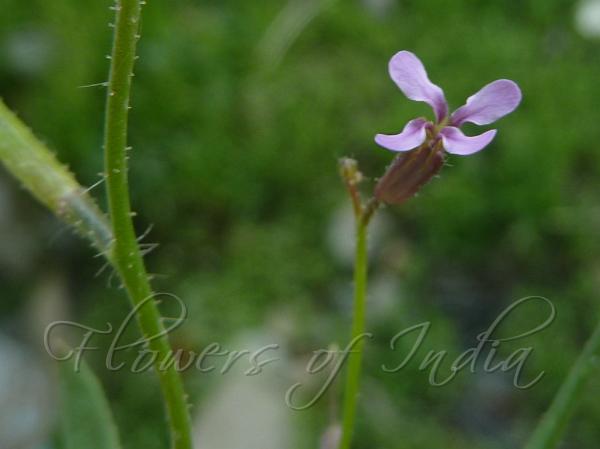|
| Blue Musk-Mustard |
|

|

| File size | 111827 |
| Original date | 6/22/15 8:51 AM |
| Resolution | 1024 x 768 |
| Flash | Flash did not fire, auto |
| Focal length | 4.1mm |
| Exposure time | 1/100s |
| Aperture | 3.3 |
| Focus Distance | |
| Metering Mode | Multi-segment |
| Camera make | Panasonic |
| Camera model | DMC-TZ10 |
| Sensor type | OneChipColorArea |
|
|
|
|
Photo: |
Botanical name: Chorispora tenella Family: Brassicaceae (Mustard family)
Synonyms: Chorispermum tenellum, Raphanus tenellus, Cheiranthus taraxacifolius
Synonyms: Chorispermum tenellum, Raphanus tenellus, Cheiranthus taraxacifolius
Blue Musk-Mustard is an annual herb 10-25 cm tall and
covered abundantly in sticky foliage. The four tiny flower petals
emerge from a loose tube of sepals and spread into a flower about a
centimeter wide. The flowers are lavender in color and a field heavily
infested with purple mustard can take on a distinct lavender wash.
Basal leaves are in a rosette, inverted-lanceshaped, wavy-toothed, 3-8
cm long, 5-20 mm broad, stalked; upper leaves shortly stalked to
stalkless, similar but becoming smaller upwards. The plant has a strong
scent which is generally considered unpleasant. The fruits are long
upturned cylindrical capsules about 4 cm long containing round,
reddish-brown seeds. This is a tenacious weed which can be troublesome
in agriculture. It reduces yields in grain fields and when it is
consumed by dairy cattle it gives their milk a bad taste and odor. This
plant reproduces by seed, so any control method preventing the plants
from setting seed is effective. Blue Musk-Mustard is found in most of
Europe and Asia. In India it is found in the Himalayas, from Kashmir to
Lahaul, at altitudes of 100-3000 m.
| Identification credit: Varun Sharma | Photographed in Lahaul, Himachal Pradesh. |
• Is this flower misidentified? If yes,